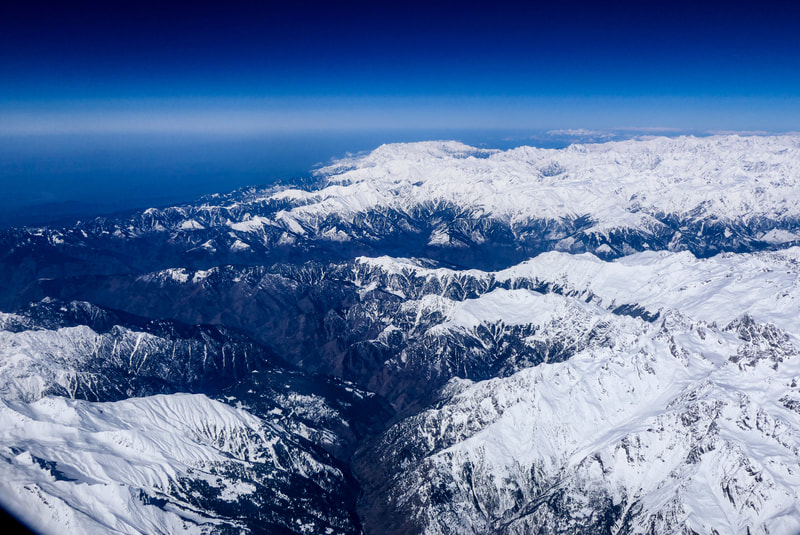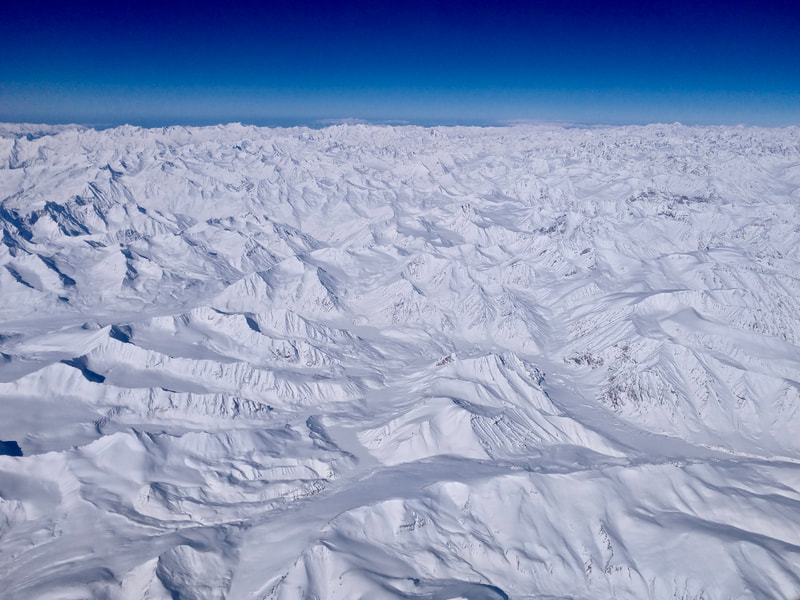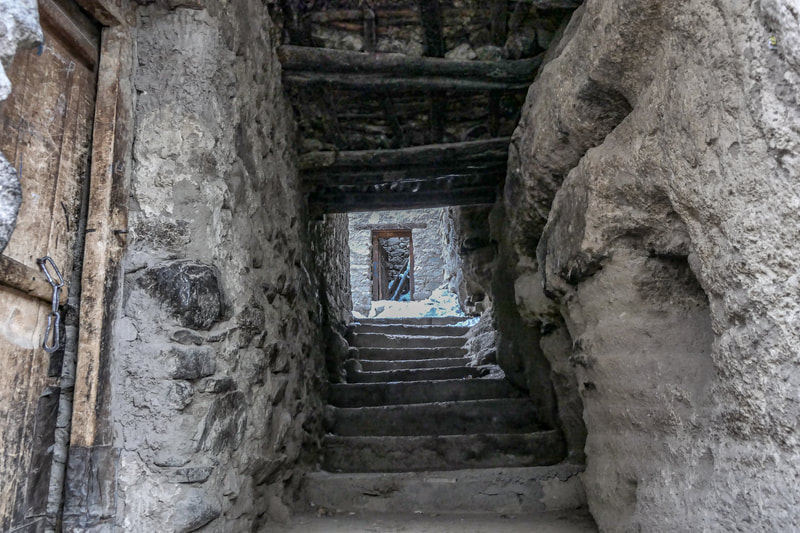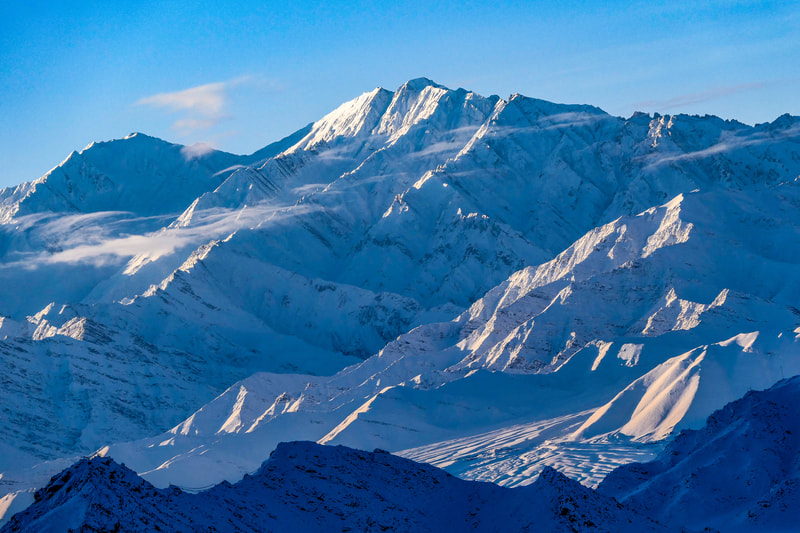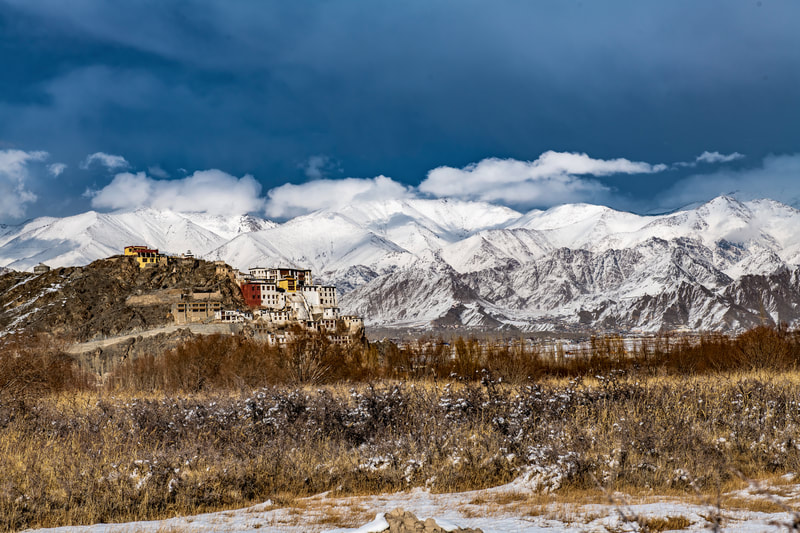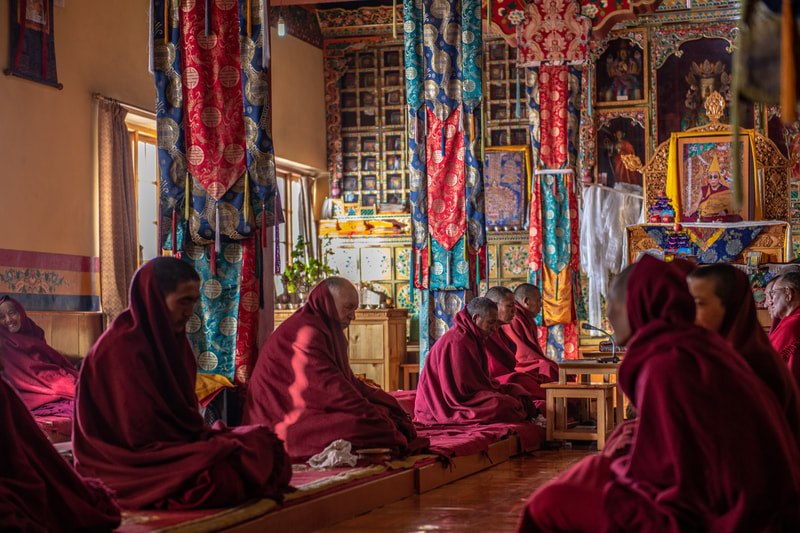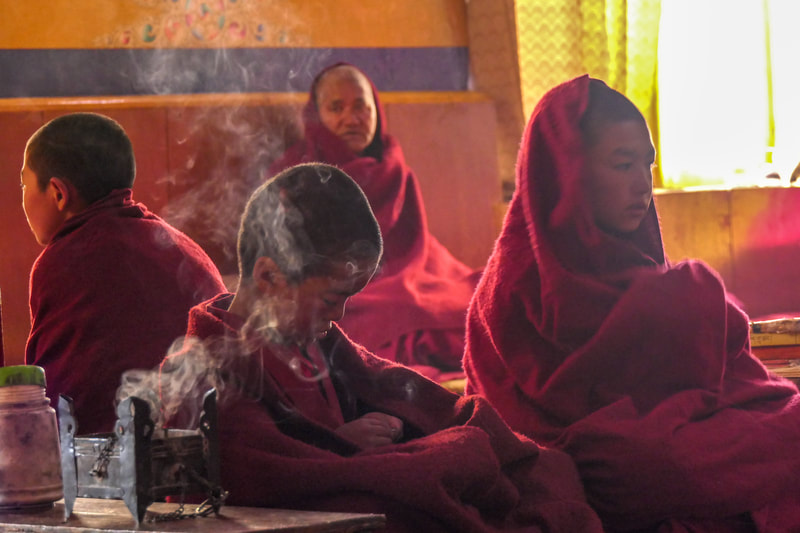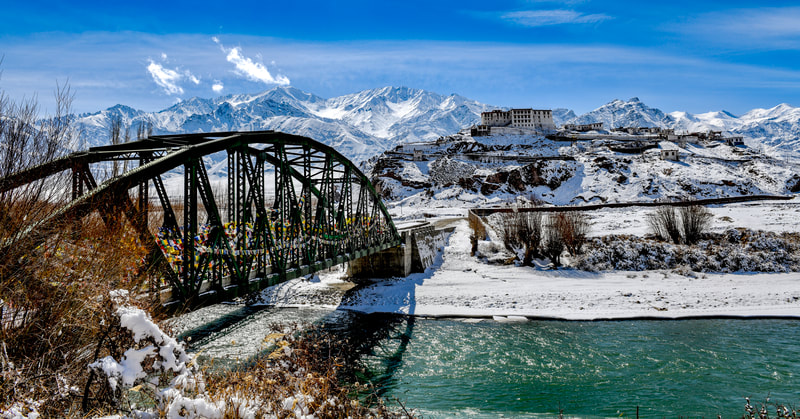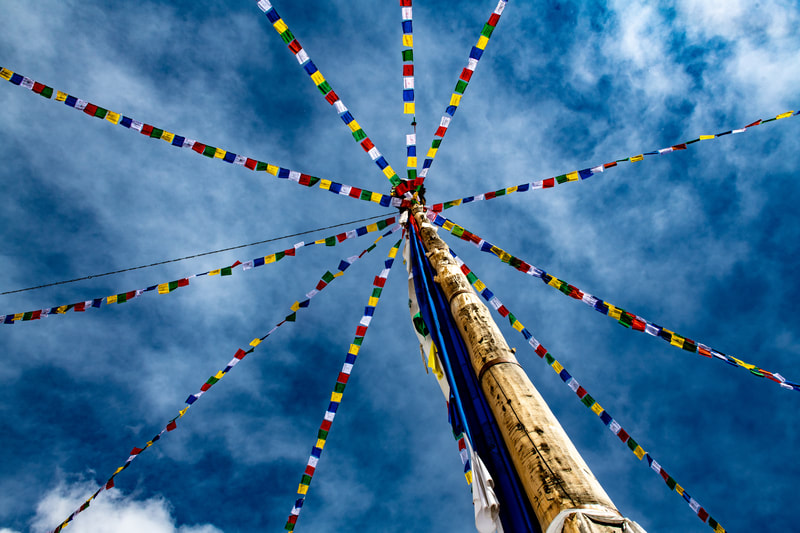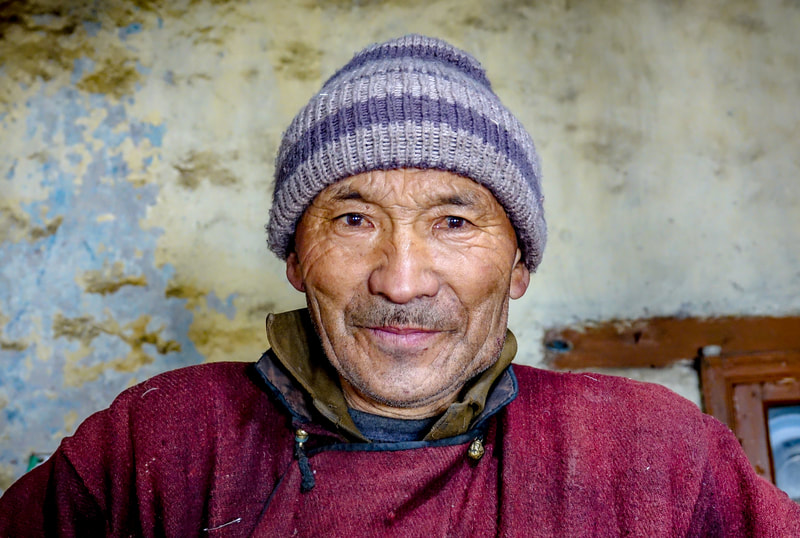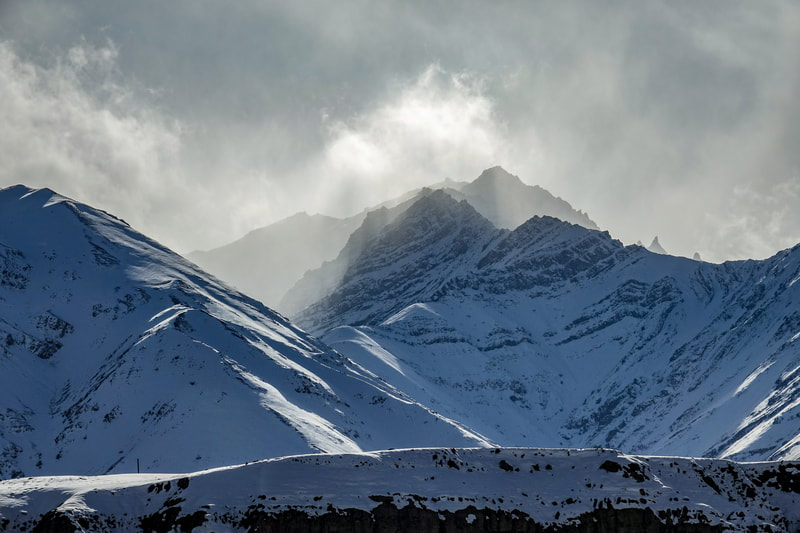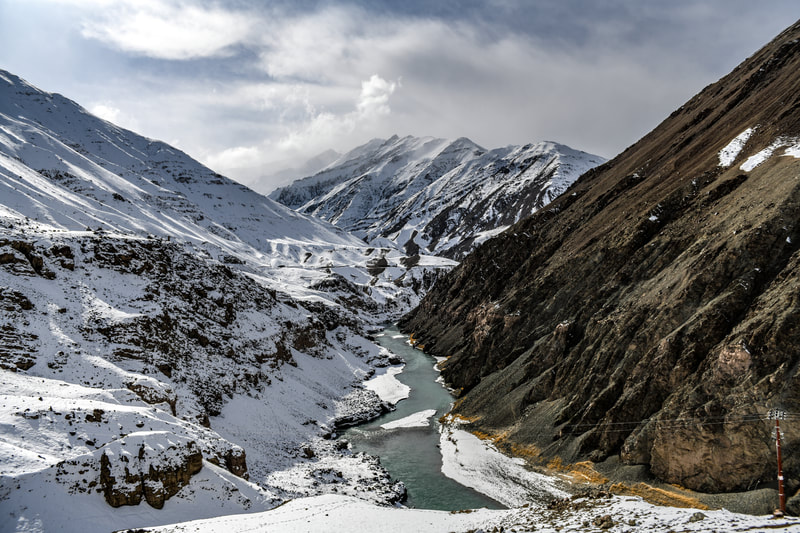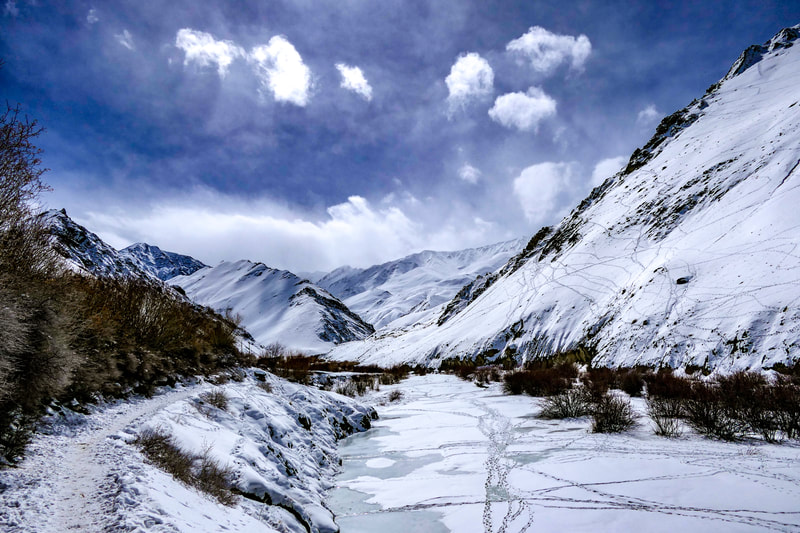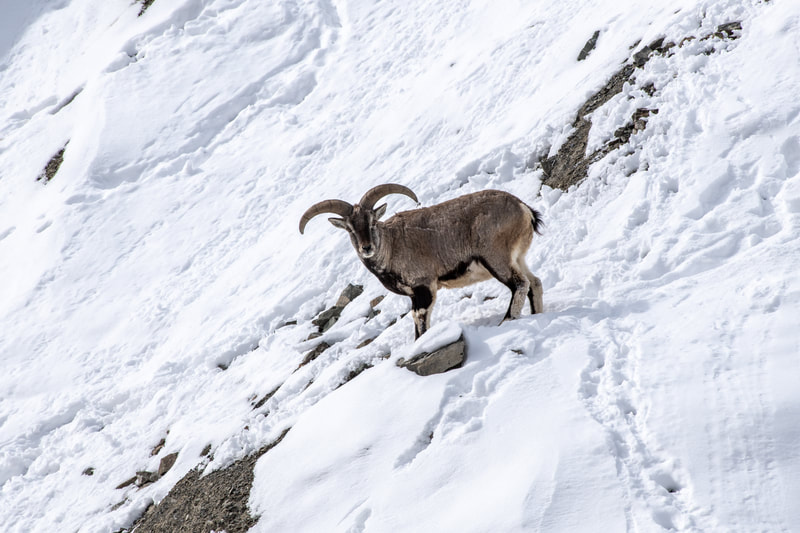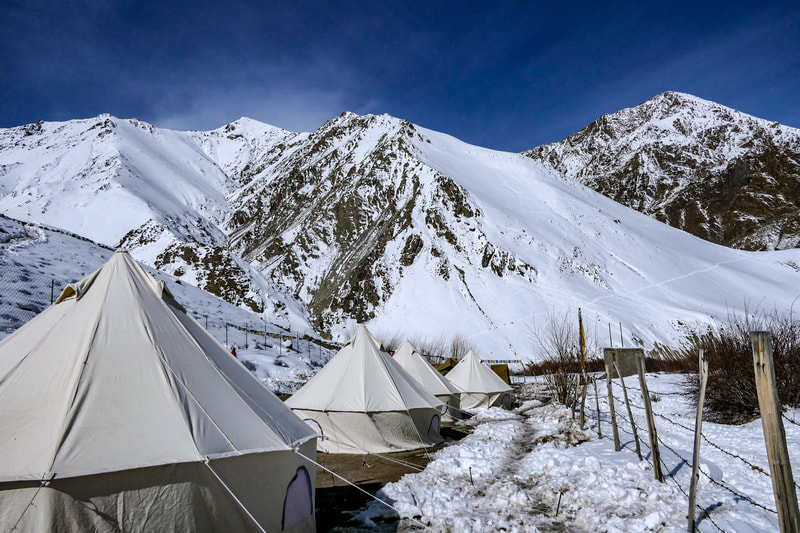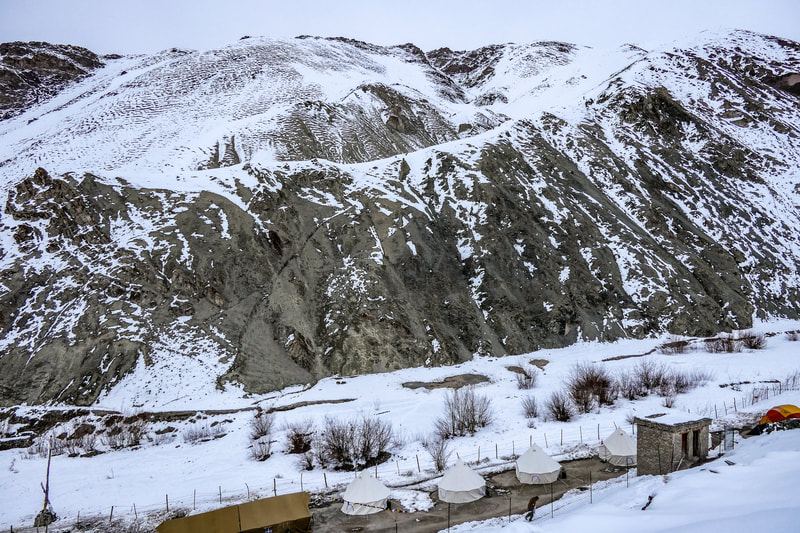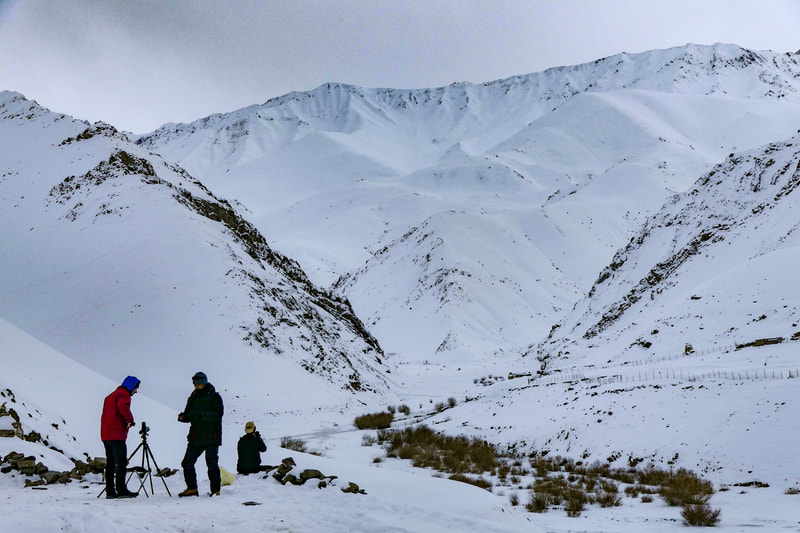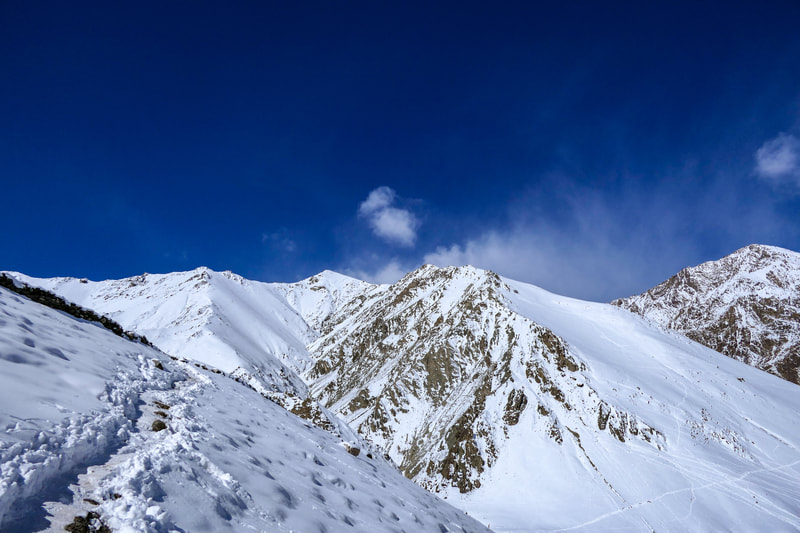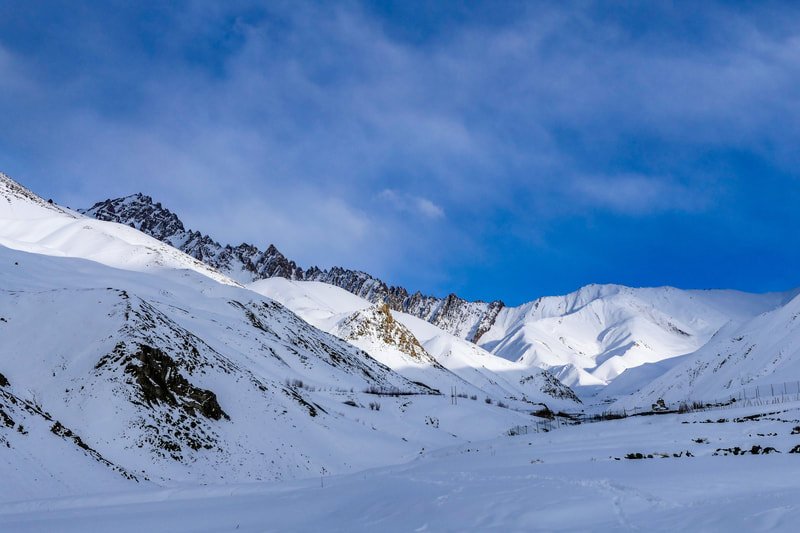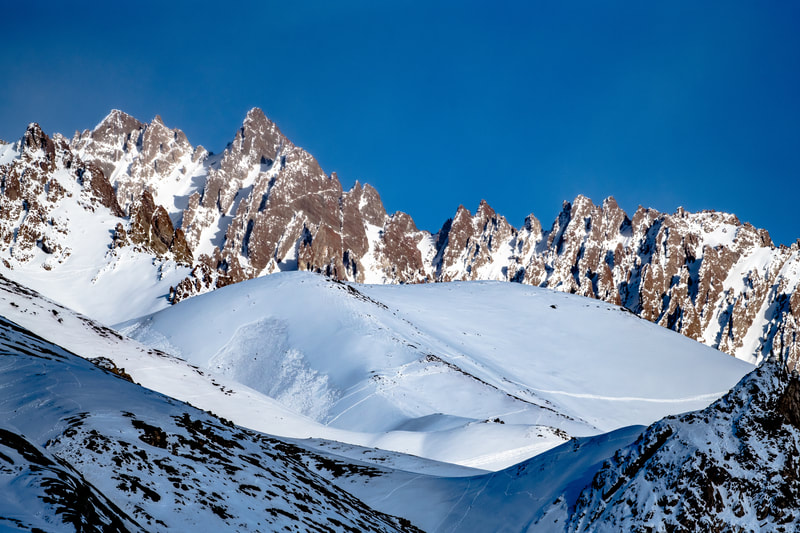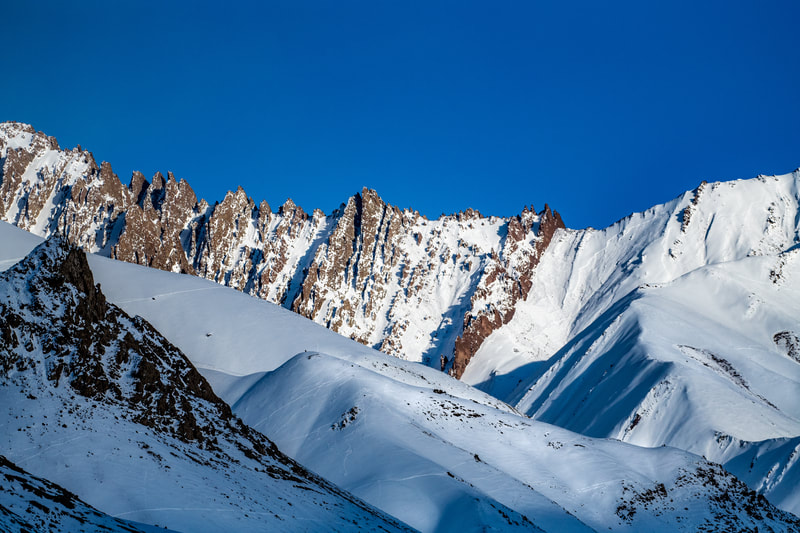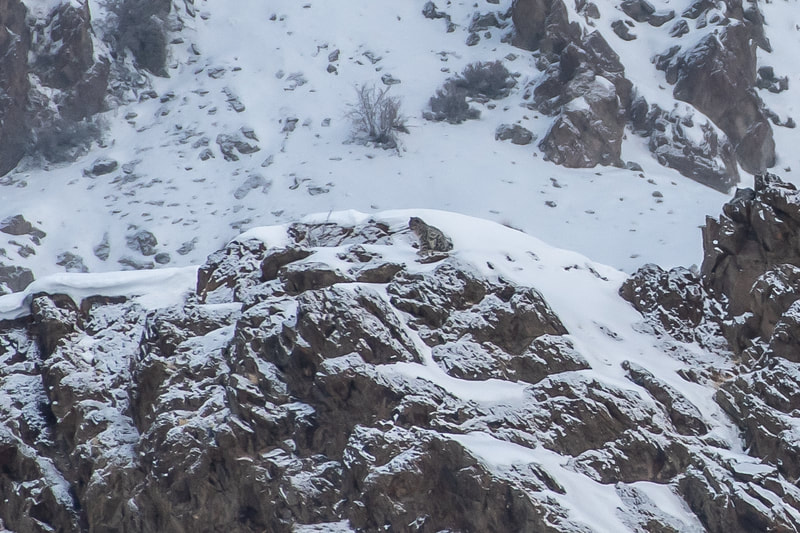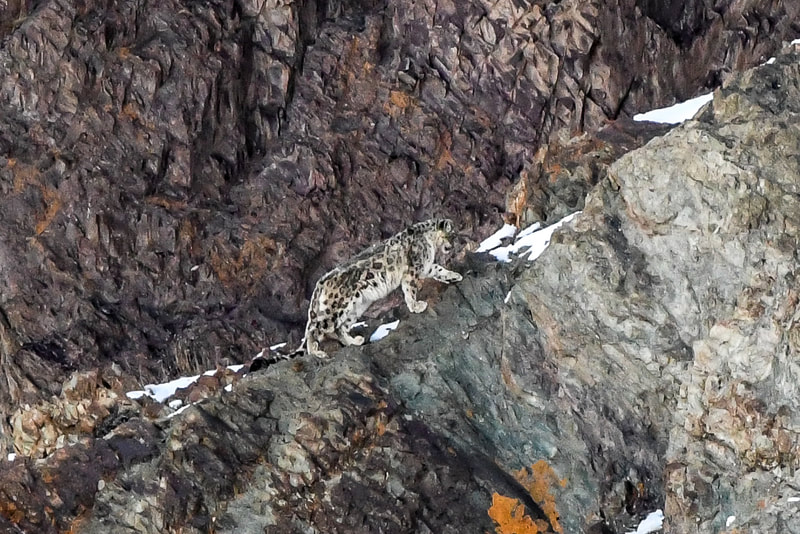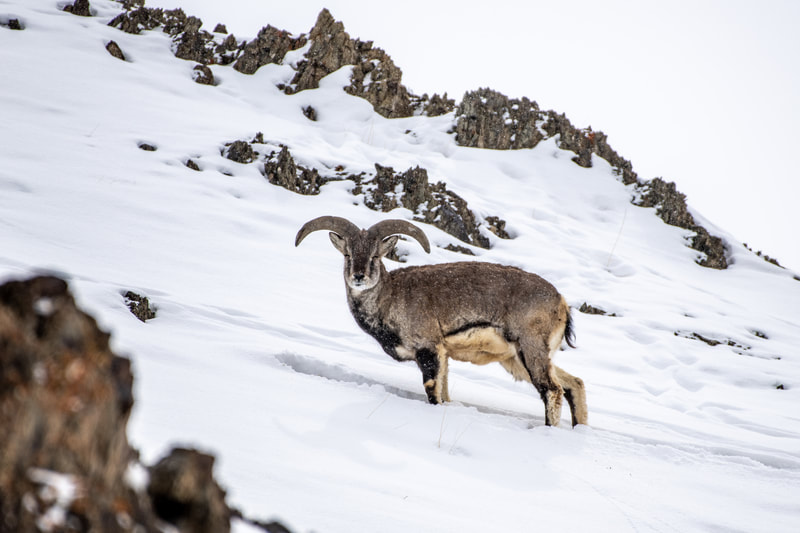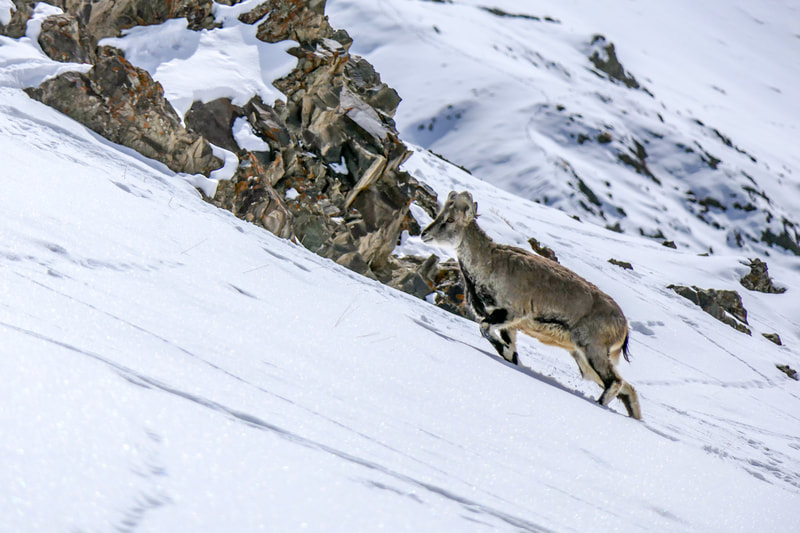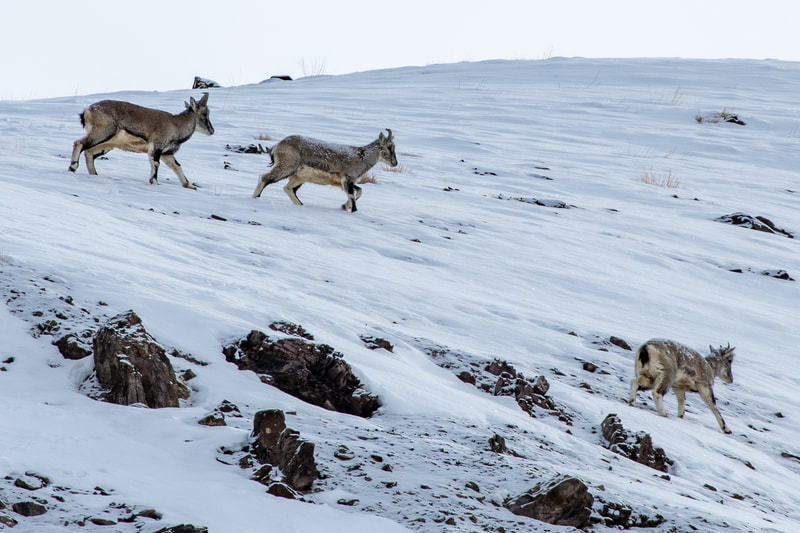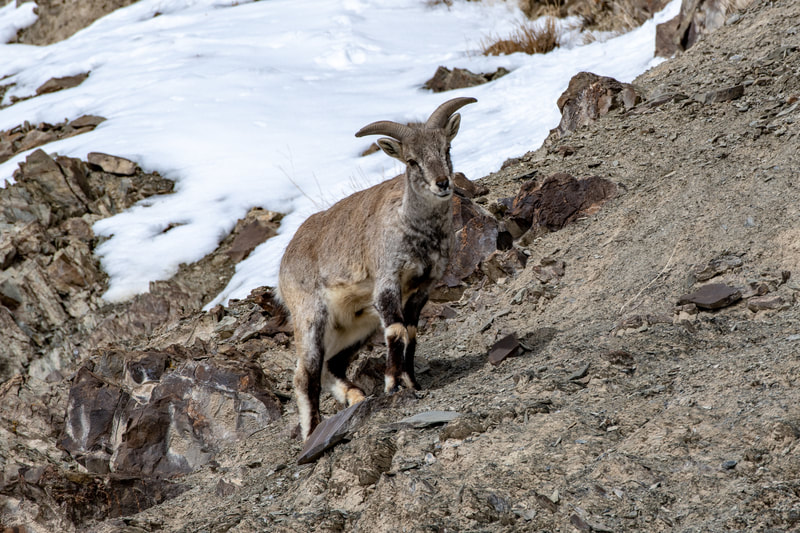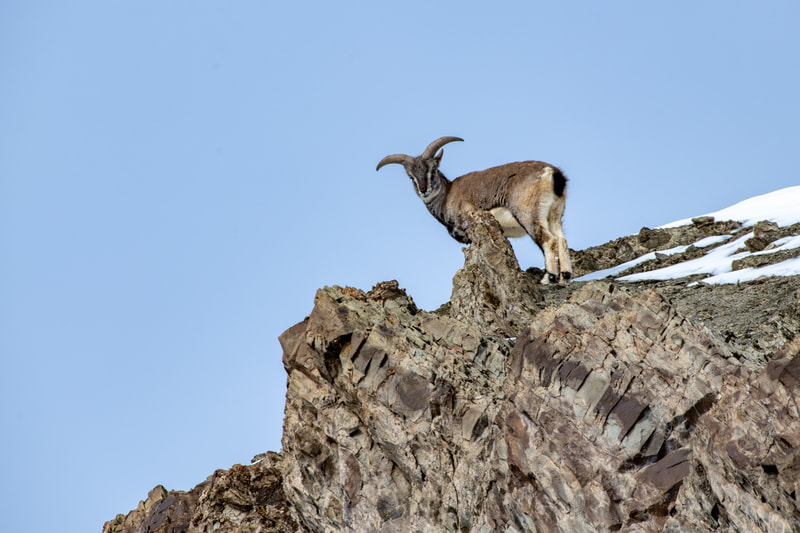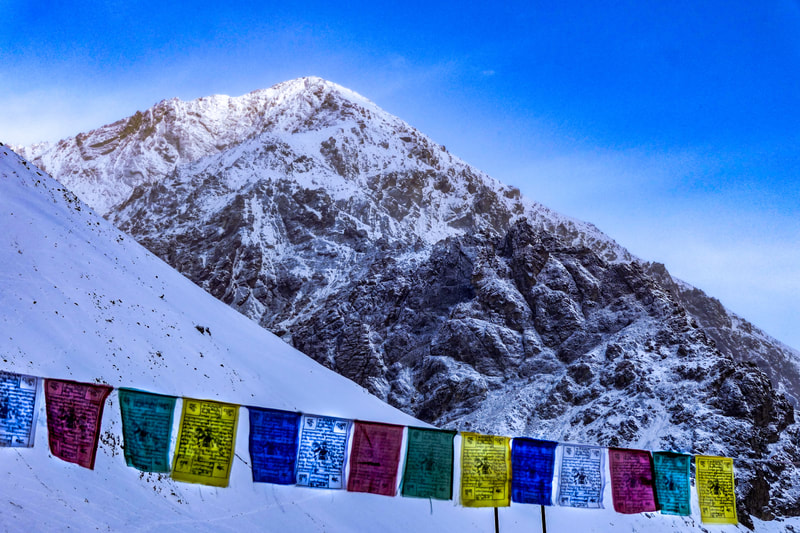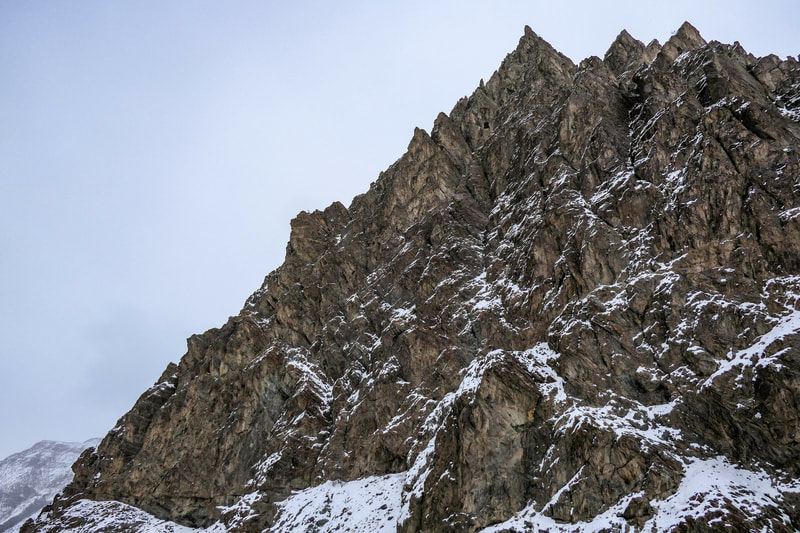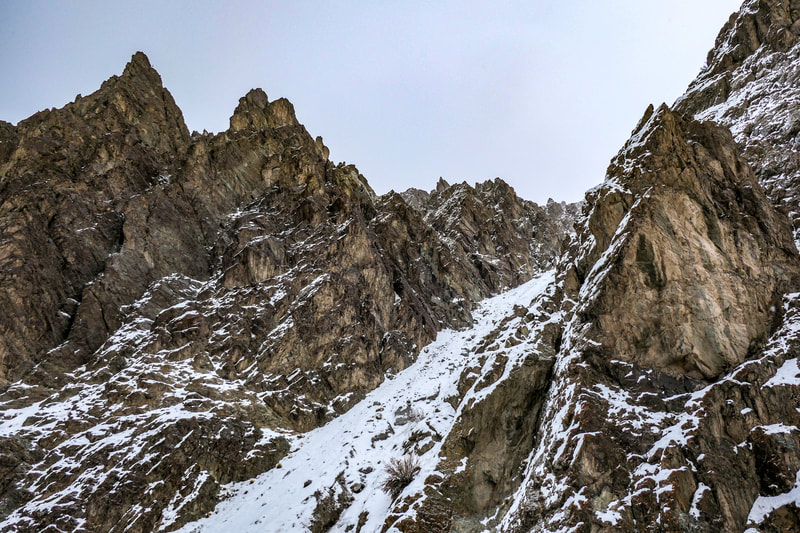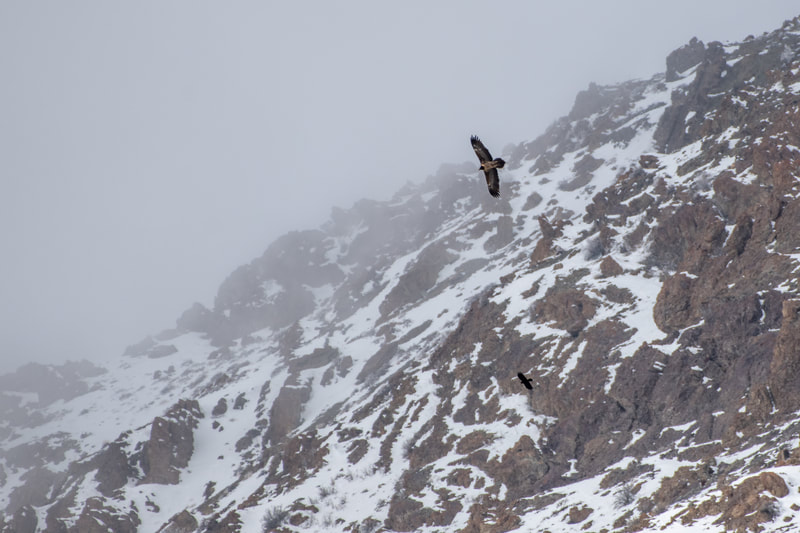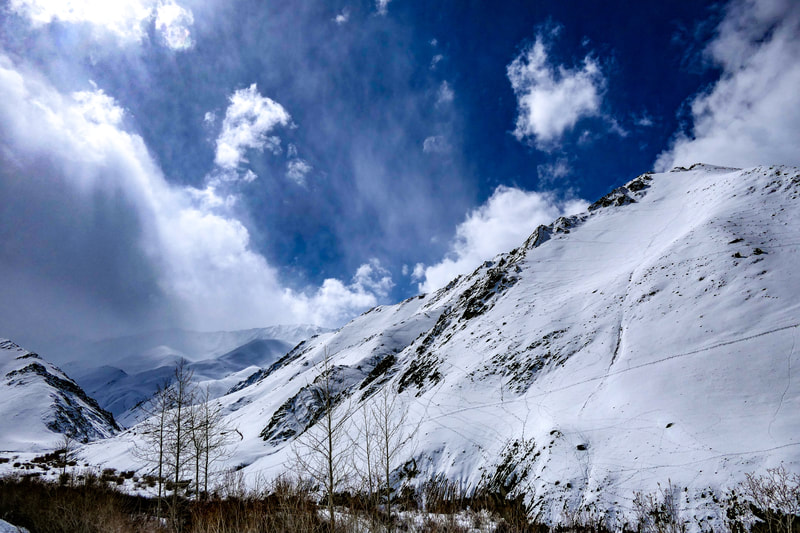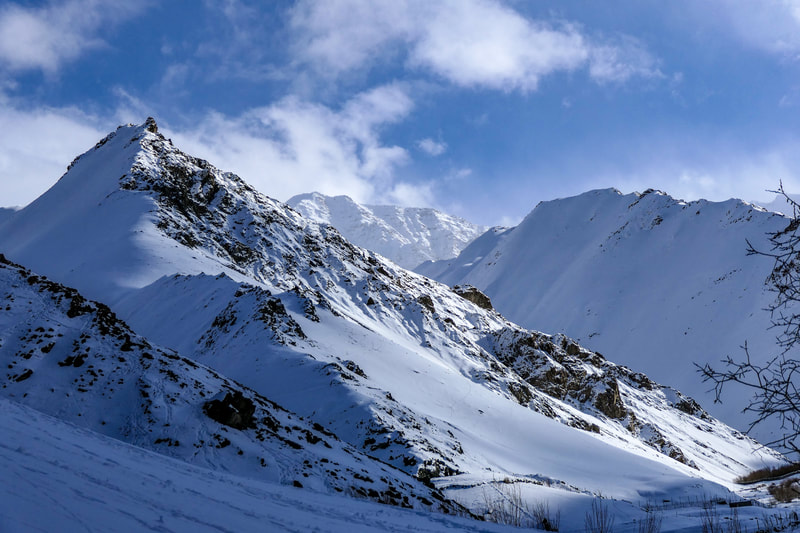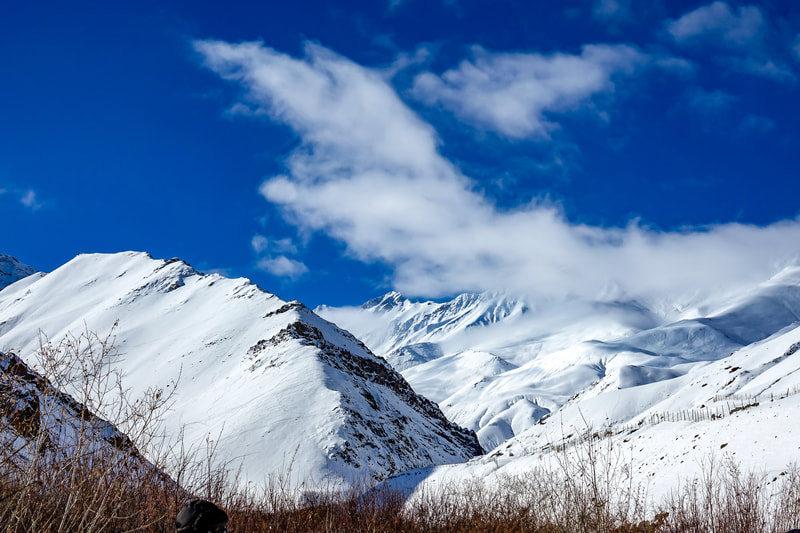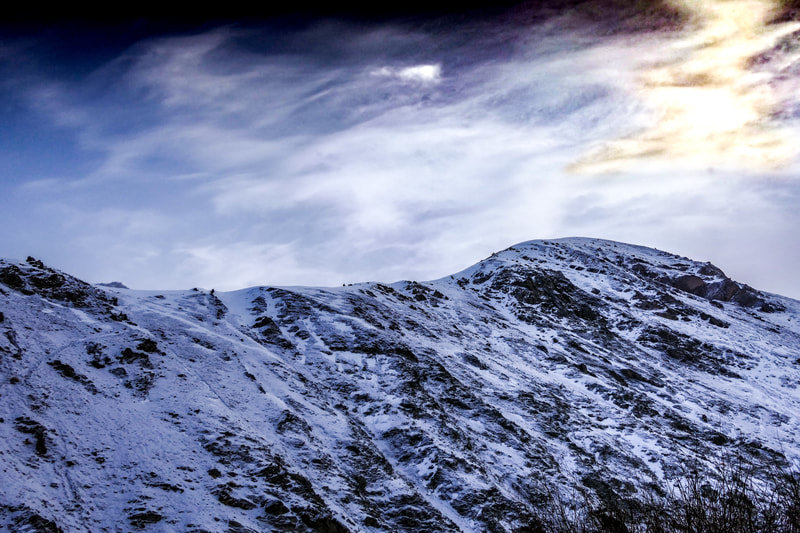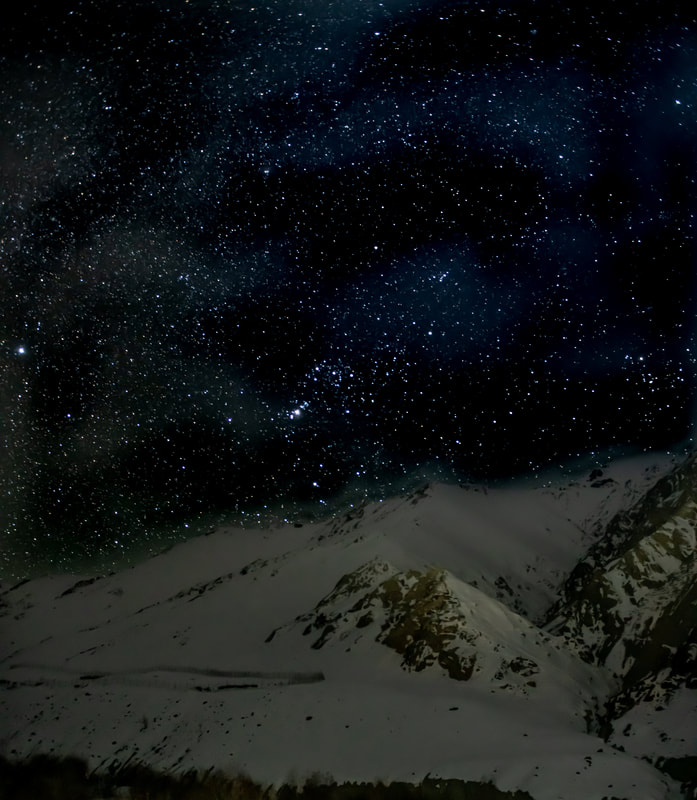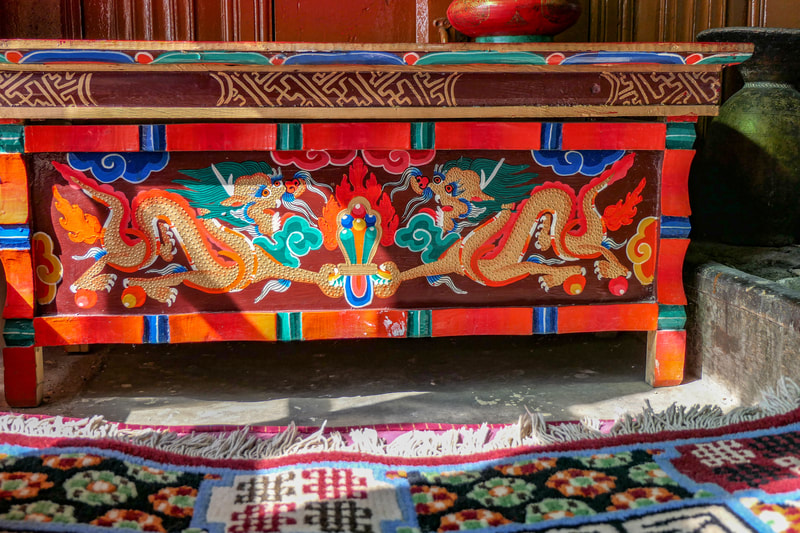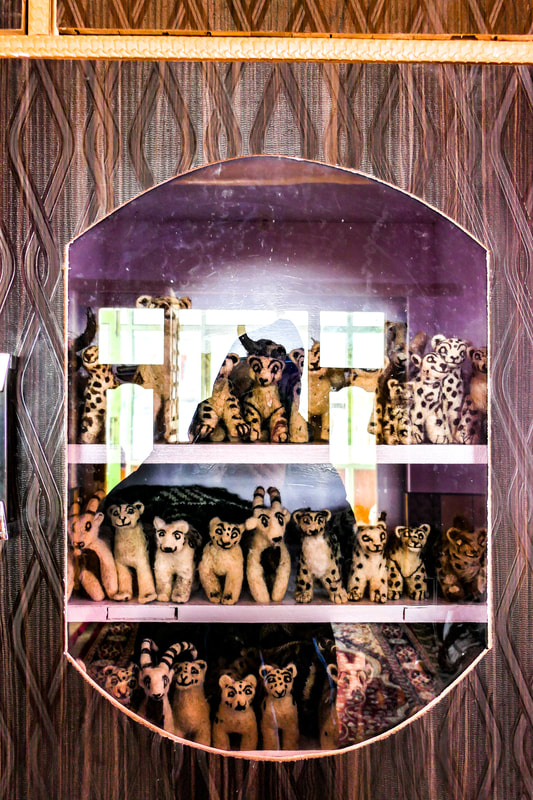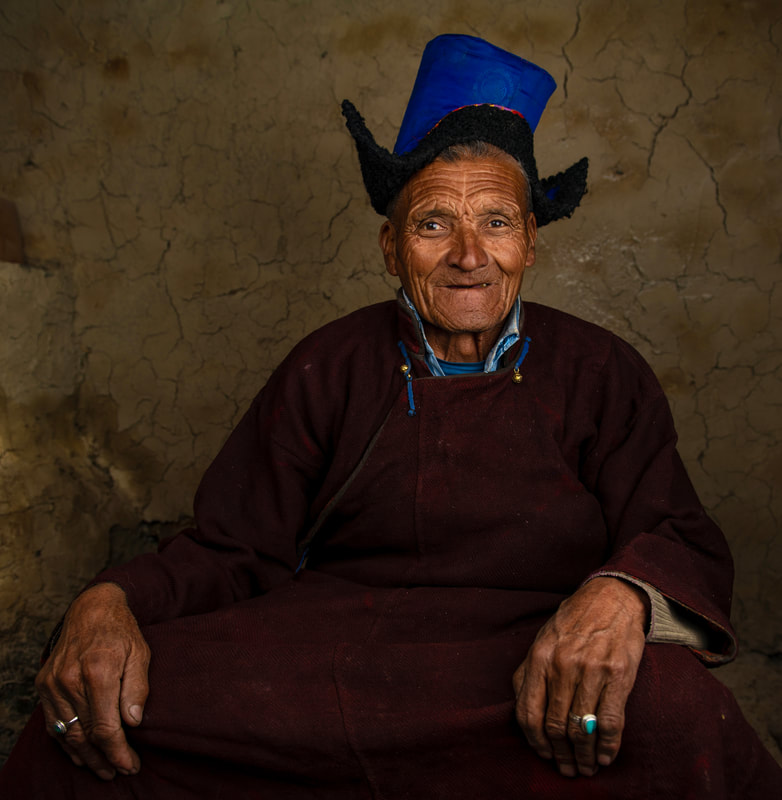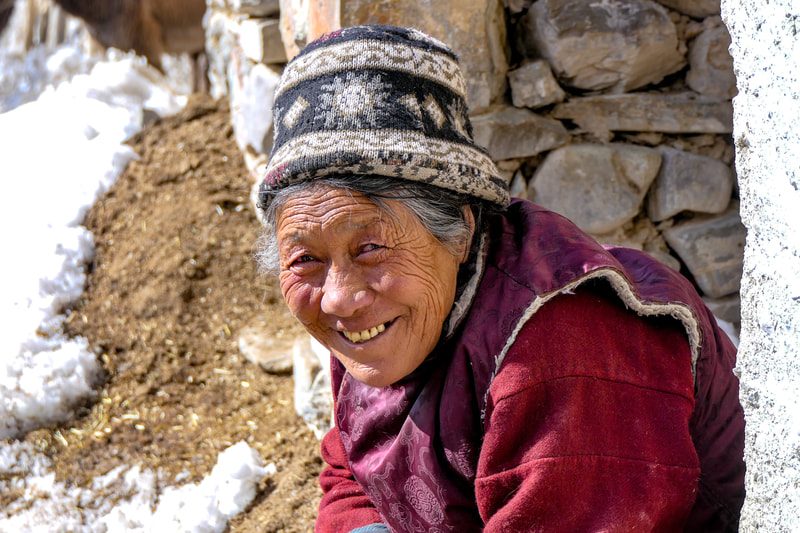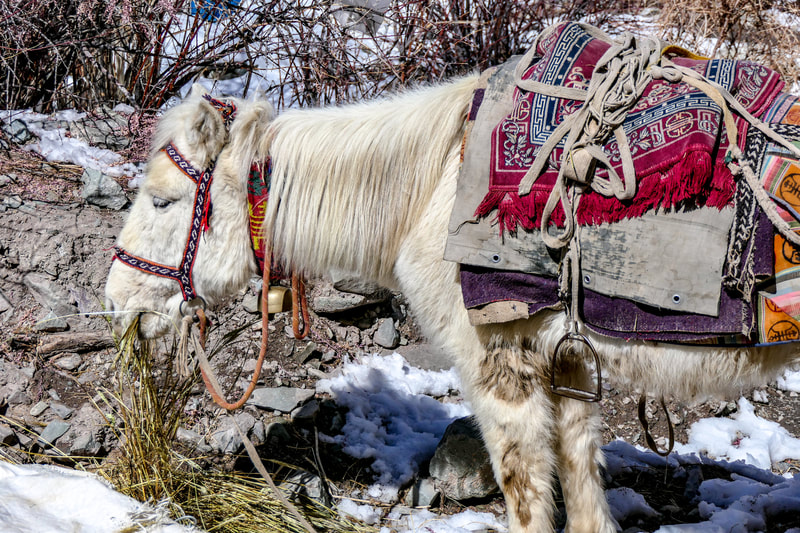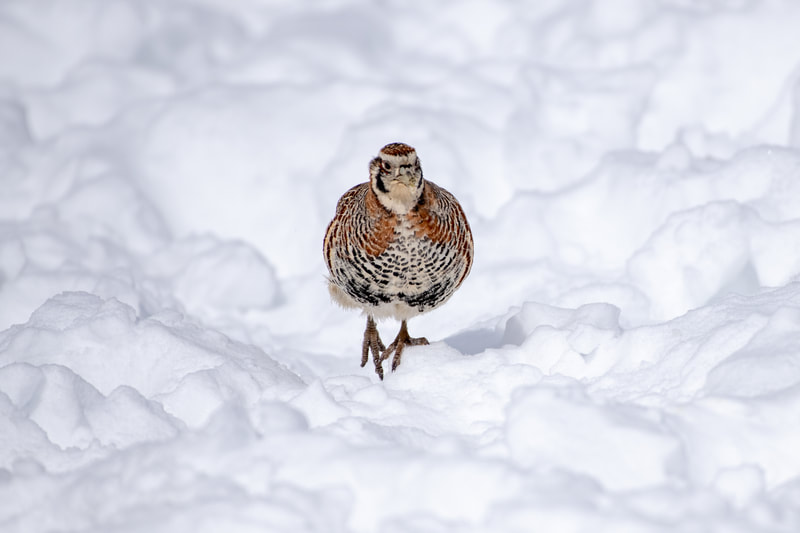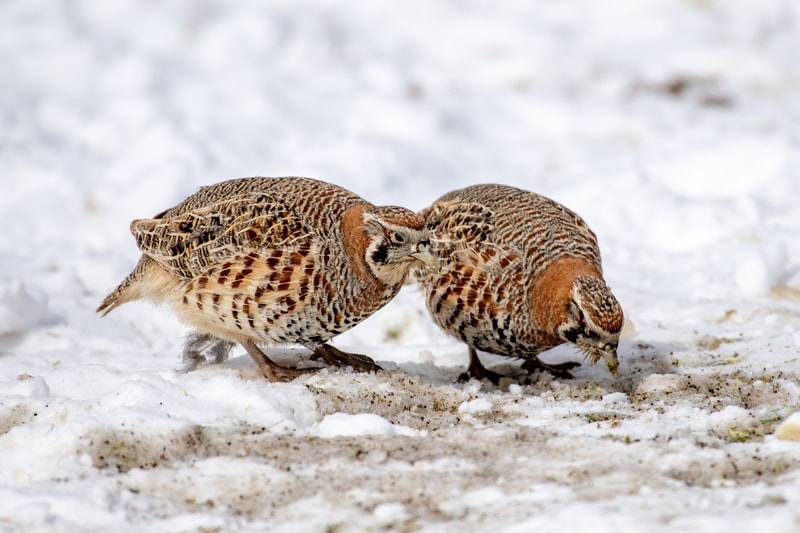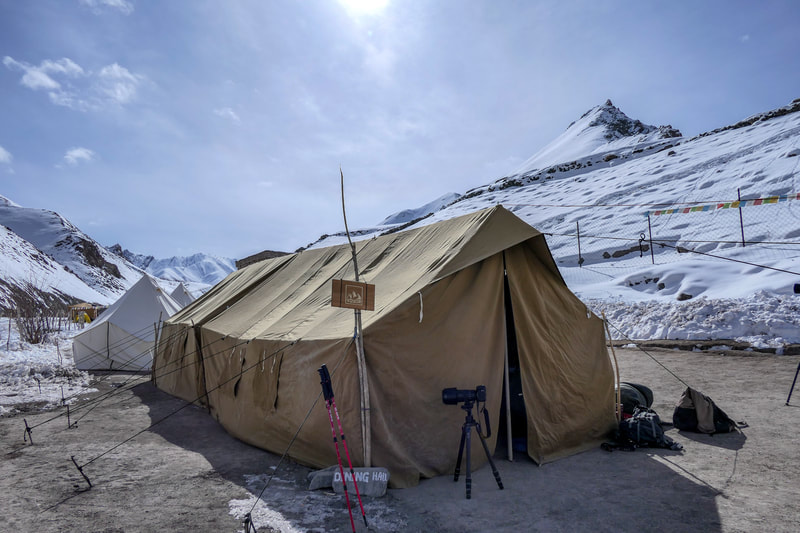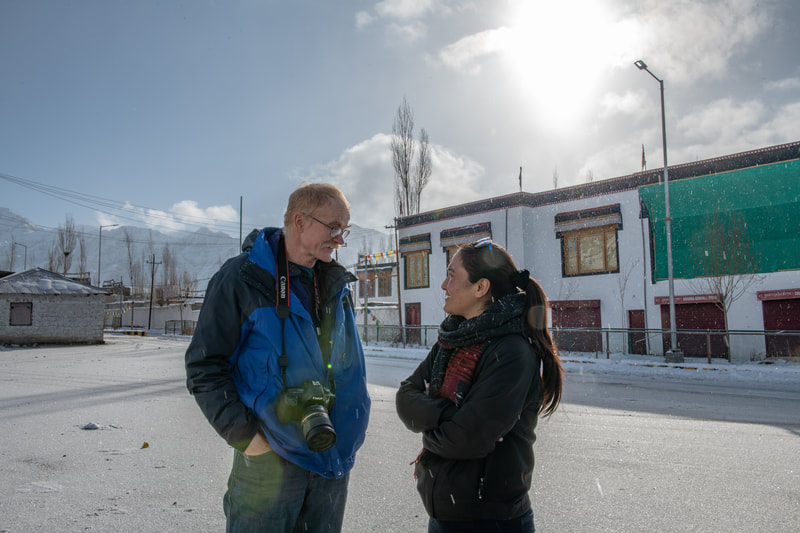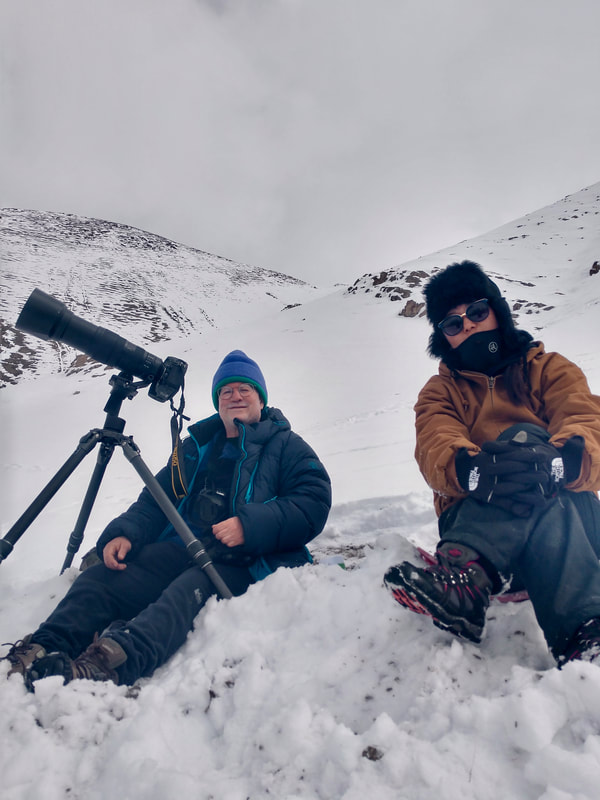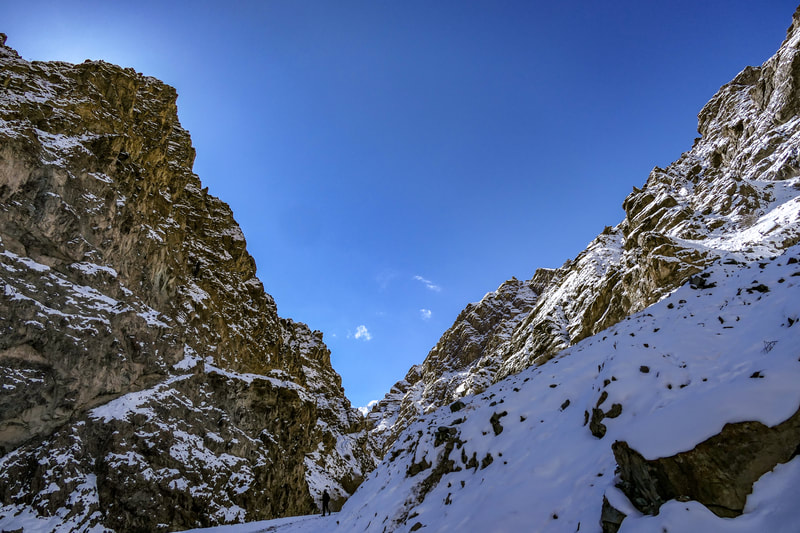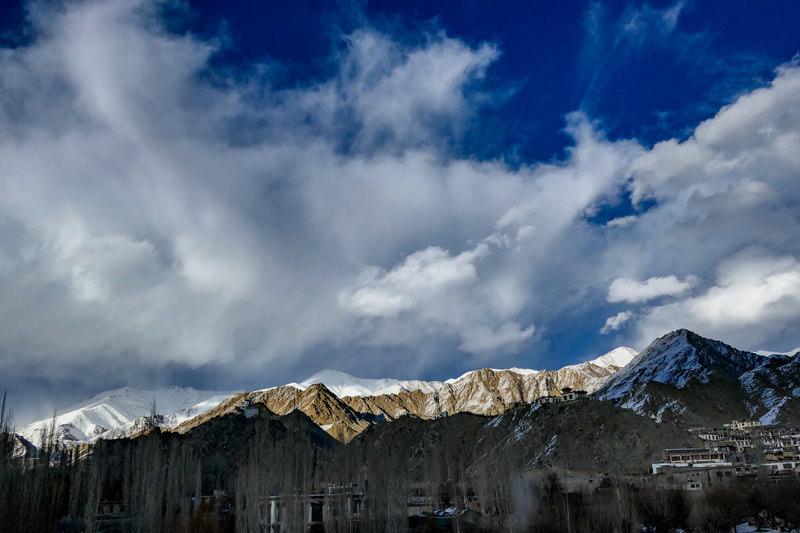India 2019 - Ladakh
Snow Leopards, Mountains, Monasteries, and more
Scroll down below this text for photos, and/or enjoy some from the slideshow above.
From February 23 - March 5, 2019, I joined a photographic trip to northwestern India, run by Oryx Photographic Expeditions and Voygr Expeditions (a local adventure travel organization specializing in photography, wildlife, culture, and exploration of unique and remote parts of India and Central Asia). The goal of the trip was to search for and maybe even photograph the snow leopard, a near mythical creature that, until recently, I thought required a miracle, and months in the highest Himalayas, to see (sometimes called the "gray ghost"). Although snow leopards can be found across much of the Himalayan region (southeastern China west through Bhutan, Nepal, Tibet, and India, potentially into parts of Afghanistan, Pakistan, and Tajikistan, up through Kyrgyzstan and parts of Kazakstan, Mongolia, and Siberia), they are rarely seen, at least by "Westerners" until recently. They favor remote, high altitude mountains, they have huge territories, move mainly at dawn and dusk, are shy, and very well camouflaged. In summer, when travelers are more likely to venture into their domain, the leopards move higher into even more inaccessible terrain. Recently. however, various wildlife and adventure travel groups have begun finding them with some frequency by going to areas where their population density is relatively high, where there is wide visibility around a base camp area... in winter! The problem with this strategy, from a traveler's perspective, and especially when the traveler is a photographer, is that in addition to dealing with very high altitudes, it is COLD!! We camped at 12,600 feet, and it reached 25 below zero C at night (about minus 15 F). But the goal of seeing a snow leopard made it worth it! Further, Oryx, Voygr, the National Park, and all staff associated with this venture did an outstanding job of making things safe and bearable, if not exactly comfortable!, under these conditions.
Ladakh, a mountainous region in far northwestern India, is one of several places where one can see snow leopards, and in fact is currently probably the destination with the highest likelihood of sightings. Most trips there, including ours, spend 2-3 days acclimatizing in Leh, the main city in eastern Ladakh, and then hike up to a base camp in Hemis National Park, a spectacular protected area not too far from Leh.
Our "warm-up" days in Leh Valley were fascinating in their own right, as we got a rich exposure to Ladakhi culture in addition to getting used to the altitude (a bit). Ladakh is the easternmost Division of the Indian state of "Jammu and Kashmir". It borders Tibet, and the people and culture show much Tibetan influence. Most people are Buddhist, and picturesque monasteries dot the mountainous landscape throughout Leh Valley. During our time in the Leh Valley, we visited several monasteries, observed morning prayers in one, visited a traditional Ladakhi house, and explored the interesting town of Leh.
On the first day of the main expedition, we drove into Hemis National Park and hiked three miles up to an open valley where Voygr had set up tents. Hemis has a relatively high density of snow leopards, and the park, in collaboration with conservation and travel groups has worked with local communities to raise awareness about snow leopards and gain local support for their conservation. People in villages in or near the park have become guides, spotters, porters, and camp staff, earning income in those ways, and gaining knowledge and appreciation for snow leopards as well as the broader Himalayan ecosystem. So far, this strategy appears to be a sustainable way to ensure protection of the park into the future, as well as survival of the snow leopard and fellow denizens of this remarkable region.
For almost 8 days in Hemis, we searched for the magnificent snow leopard. The strategy was to scan ridge-tops, especially early in the morning and at dusk. Snow leopards like to walk along the ridges so they can search fo prey on either side. The Bharal, or Blue Sheep, is their main prey, and we saw many Bharal.
And did we see any snow leopards? Well, by now you may have noticed pictures in the running slide show above, so the answer is yes, but here is a funny story of the first one...
Especially at the beginning, it would be an understatement to say that camp conditions were tough (due to cold and altitude), and it was difficult to sleep. We slept on simple narrow cots in double-layered sleeping bags. You had to cinch both the inner and outer bags around your nose to keep from freezing, but then breathing wasn't easy, especially if the inner and outer bags got out of alignment, which was almost always the case, at least in the beginning. And of course, breathing and sleeping were difficult due to the altitude. I'm not sure if I slept at all the first night, maybe a few brief moments. When my cinch holes aligned around eye level and I finally sensed daylight, it was with a mix of dread and relief-- relief that I had survived the night!, but dread that now I had to get out out of my sleeping bag, which had become remarkably toasty, and face the morning being both frozen and sleep deprived. So it was again with mixed emotions that, with sun barely creeping above the eastern mountain peaks, a spotter came running down to the tents yelling "Shan Shan" (Ladakhi for snow leopard), and then louder "SNOW leoPARD! SNOW leoPARD!!". I was actually slightly tempted to stay curled up in that nice warm sleeping bag, I steeled myself and sat bolt upright: "This Is What I Came For!". The daybreak sun was almost blinding when I stumbled out of the tent, turning the snow brilliant against a deep deep blue sky. My nostrils crackled as I breathed the frigid dawn air, enjoying its purity, and I stood amazed by the spectacular mountain scenery around the camp. I knew then that, even if we failed to see a single snow leopard, and even if I couldn't sleep much!, just "being here" would be one of the great experiences of my life.
And yes, we did see snow leopards, even that first morning. All sightings were distant, usually over a kilometer away, so the leopard photos below are grainy and not the greatest, and the first ones are small to give you an idea of how far away they were. But hopefully, they show at least a hint of the power and majesty of the cats, and the often surprisingly colorful terrain that surrounds them-- brown and purple rocks with bright orange and yellow lichens. We had four leopard sightings in total - one adult on that first morning, another single adult, a mother with two cubs, and on the last day, the two cubs by themselves. The single adults could have been the same individual or two different ones, or even the mother, so in total we saw between 3 and 5 of the cats.
Interesting fact about snow leopards: they are very camouflaged, but they are not white, so the camouflage is not to hide against snow. They are light grayish-brown, which makes them blend in perfectly against the rocky crags where they spend most of their time. In fact, if you are lucky enough to see a snow leopard walking on the snow, it's actually not that common and is much easier to see than when it's in the rocks. And an interesting fact about this trip: Ladakh is mostly an alpine desert (like Tibet) in the rain shadow of the Himalayas to the West. So even in winter, the steep mountainsides are usually mostly exposed, especially those facing South. However, right before our expedition started, Ladakh had one of its heaviest snow storms in the last 20 years, so there was much more snow than usual. And that meant that we even had the good fortune to see a snow leopard... walking in the snow!
After this Himalayan adventure, I flew to Assam in northeastern India, where I joined a birding trip and visited four national parks. Though the focus of that portion was birding, we saw lots of rhinos, deer, lowland forest and river scenery, tea plantations, and very different landscapes and cultures. See photos from that exciting and very different portion of the trip here.
From February 23 - March 5, 2019, I joined a photographic trip to northwestern India, run by Oryx Photographic Expeditions and Voygr Expeditions (a local adventure travel organization specializing in photography, wildlife, culture, and exploration of unique and remote parts of India and Central Asia). The goal of the trip was to search for and maybe even photograph the snow leopard, a near mythical creature that, until recently, I thought required a miracle, and months in the highest Himalayas, to see (sometimes called the "gray ghost"). Although snow leopards can be found across much of the Himalayan region (southeastern China west through Bhutan, Nepal, Tibet, and India, potentially into parts of Afghanistan, Pakistan, and Tajikistan, up through Kyrgyzstan and parts of Kazakstan, Mongolia, and Siberia), they are rarely seen, at least by "Westerners" until recently. They favor remote, high altitude mountains, they have huge territories, move mainly at dawn and dusk, are shy, and very well camouflaged. In summer, when travelers are more likely to venture into their domain, the leopards move higher into even more inaccessible terrain. Recently. however, various wildlife and adventure travel groups have begun finding them with some frequency by going to areas where their population density is relatively high, where there is wide visibility around a base camp area... in winter! The problem with this strategy, from a traveler's perspective, and especially when the traveler is a photographer, is that in addition to dealing with very high altitudes, it is COLD!! We camped at 12,600 feet, and it reached 25 below zero C at night (about minus 15 F). But the goal of seeing a snow leopard made it worth it! Further, Oryx, Voygr, the National Park, and all staff associated with this venture did an outstanding job of making things safe and bearable, if not exactly comfortable!, under these conditions.
Ladakh, a mountainous region in far northwestern India, is one of several places where one can see snow leopards, and in fact is currently probably the destination with the highest likelihood of sightings. Most trips there, including ours, spend 2-3 days acclimatizing in Leh, the main city in eastern Ladakh, and then hike up to a base camp in Hemis National Park, a spectacular protected area not too far from Leh.
Our "warm-up" days in Leh Valley were fascinating in their own right, as we got a rich exposure to Ladakhi culture in addition to getting used to the altitude (a bit). Ladakh is the easternmost Division of the Indian state of "Jammu and Kashmir". It borders Tibet, and the people and culture show much Tibetan influence. Most people are Buddhist, and picturesque monasteries dot the mountainous landscape throughout Leh Valley. During our time in the Leh Valley, we visited several monasteries, observed morning prayers in one, visited a traditional Ladakhi house, and explored the interesting town of Leh.
On the first day of the main expedition, we drove into Hemis National Park and hiked three miles up to an open valley where Voygr had set up tents. Hemis has a relatively high density of snow leopards, and the park, in collaboration with conservation and travel groups has worked with local communities to raise awareness about snow leopards and gain local support for their conservation. People in villages in or near the park have become guides, spotters, porters, and camp staff, earning income in those ways, and gaining knowledge and appreciation for snow leopards as well as the broader Himalayan ecosystem. So far, this strategy appears to be a sustainable way to ensure protection of the park into the future, as well as survival of the snow leopard and fellow denizens of this remarkable region.
For almost 8 days in Hemis, we searched for the magnificent snow leopard. The strategy was to scan ridge-tops, especially early in the morning and at dusk. Snow leopards like to walk along the ridges so they can search fo prey on either side. The Bharal, or Blue Sheep, is their main prey, and we saw many Bharal.
And did we see any snow leopards? Well, by now you may have noticed pictures in the running slide show above, so the answer is yes, but here is a funny story of the first one...
Especially at the beginning, it would be an understatement to say that camp conditions were tough (due to cold and altitude), and it was difficult to sleep. We slept on simple narrow cots in double-layered sleeping bags. You had to cinch both the inner and outer bags around your nose to keep from freezing, but then breathing wasn't easy, especially if the inner and outer bags got out of alignment, which was almost always the case, at least in the beginning. And of course, breathing and sleeping were difficult due to the altitude. I'm not sure if I slept at all the first night, maybe a few brief moments. When my cinch holes aligned around eye level and I finally sensed daylight, it was with a mix of dread and relief-- relief that I had survived the night!, but dread that now I had to get out out of my sleeping bag, which had become remarkably toasty, and face the morning being both frozen and sleep deprived. So it was again with mixed emotions that, with sun barely creeping above the eastern mountain peaks, a spotter came running down to the tents yelling "Shan Shan" (Ladakhi for snow leopard), and then louder "SNOW leoPARD! SNOW leoPARD!!". I was actually slightly tempted to stay curled up in that nice warm sleeping bag, I steeled myself and sat bolt upright: "This Is What I Came For!". The daybreak sun was almost blinding when I stumbled out of the tent, turning the snow brilliant against a deep deep blue sky. My nostrils crackled as I breathed the frigid dawn air, enjoying its purity, and I stood amazed by the spectacular mountain scenery around the camp. I knew then that, even if we failed to see a single snow leopard, and even if I couldn't sleep much!, just "being here" would be one of the great experiences of my life.
And yes, we did see snow leopards, even that first morning. All sightings were distant, usually over a kilometer away, so the leopard photos below are grainy and not the greatest, and the first ones are small to give you an idea of how far away they were. But hopefully, they show at least a hint of the power and majesty of the cats, and the often surprisingly colorful terrain that surrounds them-- brown and purple rocks with bright orange and yellow lichens. We had four leopard sightings in total - one adult on that first morning, another single adult, a mother with two cubs, and on the last day, the two cubs by themselves. The single adults could have been the same individual or two different ones, or even the mother, so in total we saw between 3 and 5 of the cats.
Interesting fact about snow leopards: they are very camouflaged, but they are not white, so the camouflage is not to hide against snow. They are light grayish-brown, which makes them blend in perfectly against the rocky crags where they spend most of their time. In fact, if you are lucky enough to see a snow leopard walking on the snow, it's actually not that common and is much easier to see than when it's in the rocks. And an interesting fact about this trip: Ladakh is mostly an alpine desert (like Tibet) in the rain shadow of the Himalayas to the West. So even in winter, the steep mountainsides are usually mostly exposed, especially those facing South. However, right before our expedition started, Ladakh had one of its heaviest snow storms in the last 20 years, so there was much more snow than usual. And that meant that we even had the good fortune to see a snow leopard... walking in the snow!
After this Himalayan adventure, I flew to Assam in northeastern India, where I joined a birding trip and visited four national parks. Though the focus of that portion was birding, we saw lots of rhinos, deer, lowland forest and river scenery, tea plantations, and very different landscapes and cultures. See photos from that exciting and very different portion of the trip here.
